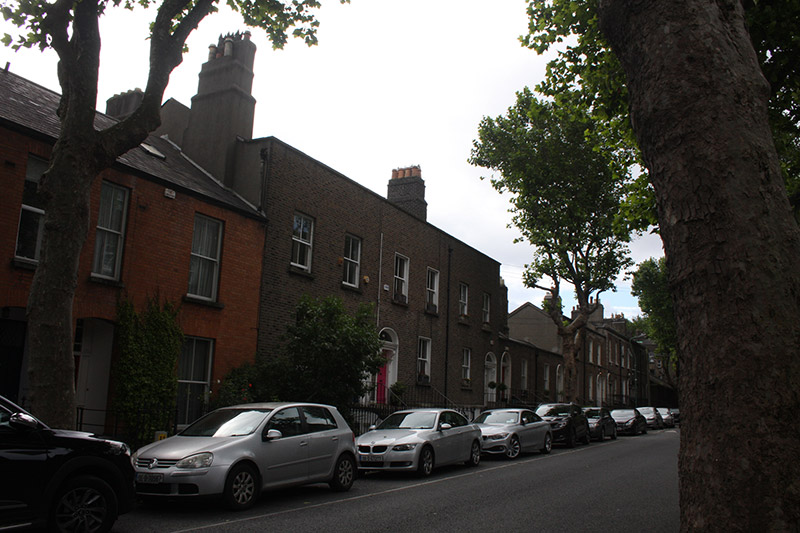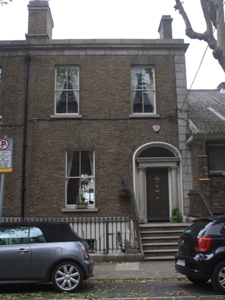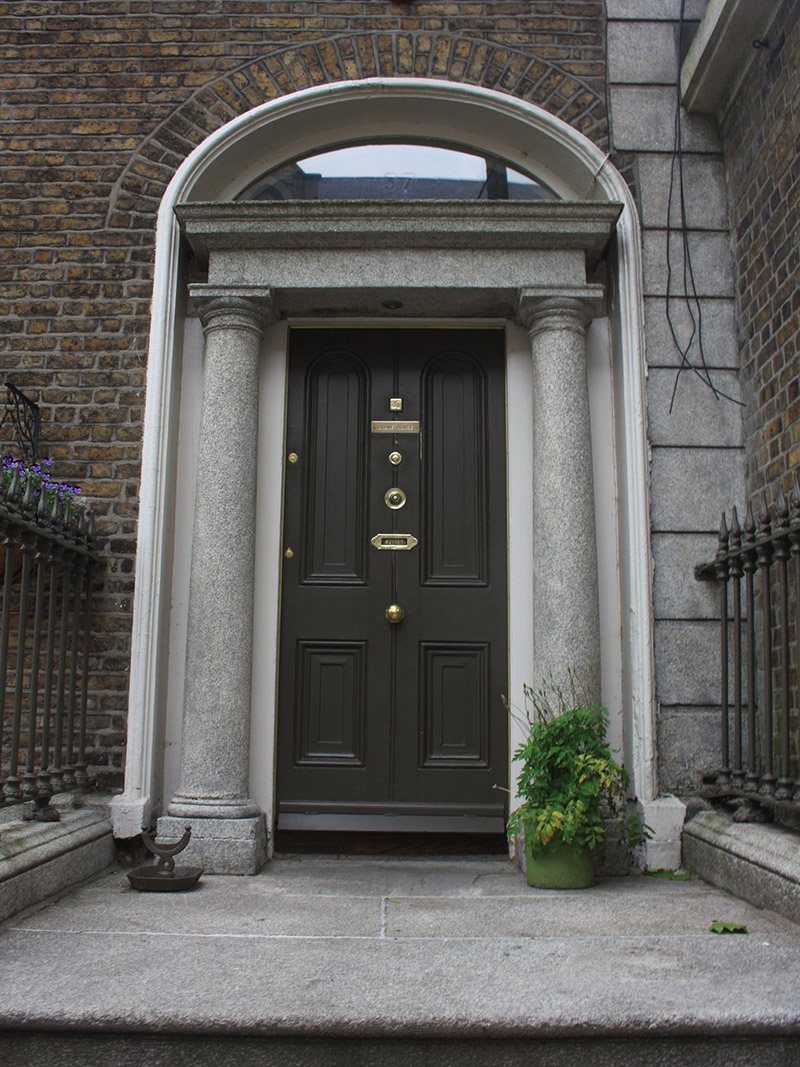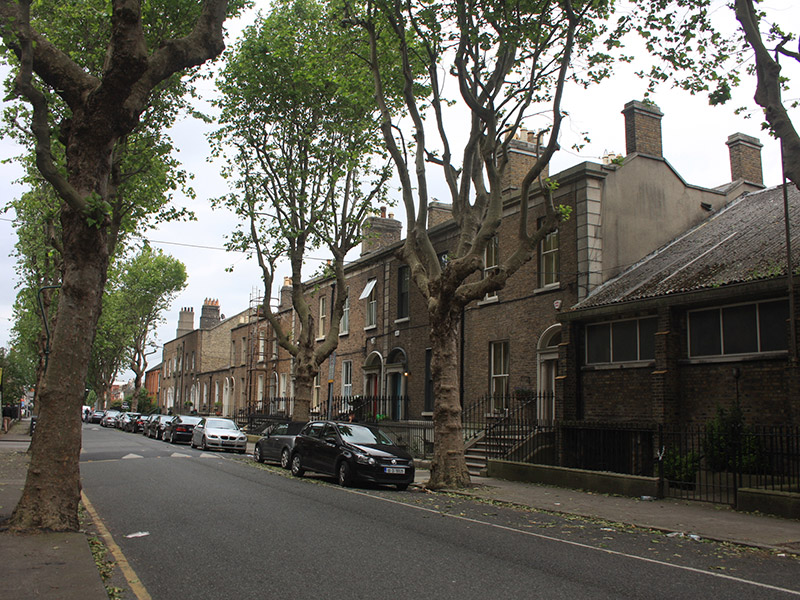Survey Data
Reg No
50110394
Rating
Regional
Categories of Special Interest
Architectural, Artistic
Original Use
House
In Use As
Apartment/flat (converted)
Date
1850 - 1870
Coordinates
315519, 232803
Date Recorded
16/06/2017
Date Updated
--/--/--
Description
End-of-terrace two-bay two-storey former house over raised basement, built c. 1860, as one of terrace of four. Now in use as apartments. M-profile pitched slate roof, shared brick chimneystacks with granite bands and clay pots, partially hidden behind cut granite parapet having carved cornice. Shared cast-iron rainwater goods. Brown brick, laid in Flemish bond, to wall to front elevation. Cut granite quoins and plinth course, over lined-and-ruled rendered wall to basement. Smooth rendered wall to side (south) elevation. Square-headed window openings with granite sills and rendered reveals, having two-over-two pane and three-over-six pane timber sliding sash windows. Elliptical-headed door opening with moulded render surround. Carved granite doorcase comprising Doric columns and entablature, with plain fanlight and timber panelled door. Nosed granite steps and platform flanked by cast-iron railings on granite plinth walls. Square-headed doorway having recent door to basement. Cast-iron gate and matching railings on carved granite plinth wall enclosing basement area.
Appraisal
This building maintains the form, fabric and detailing of its neighbours to the south, lending a pleasing sense of continuity to the streetscape. The retention of salient features such as sash windows and cast-iron railings enhance the historic character of this house. The cut granite detailing articulates and enlivens the façade. Synge Street was reputedly named for the Church of Ireland Bishop Edward Synge, who held land there in the eighteenth century. This street was developed from the late 1840s as demand for suburban housing grew with the rise of the middle class and expansion of the city.







